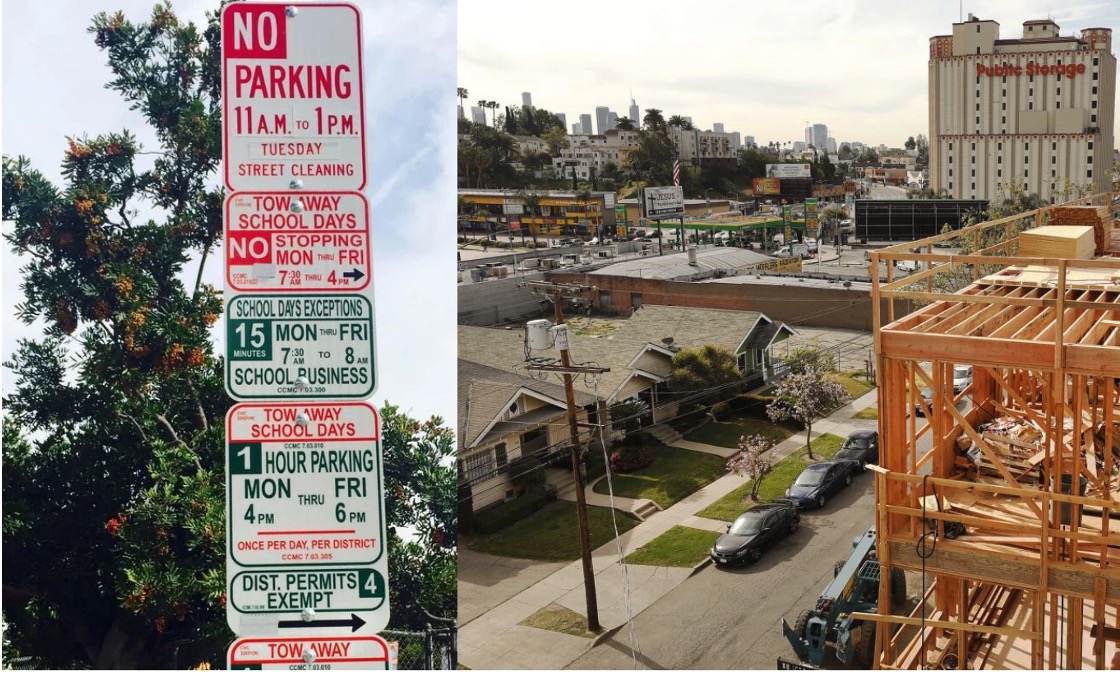Comments
ONE MAN’S OPINION - Recently elected congressman Robert Garcia (D-Long Beach) tweeted he’s proposing eliminating parking minimums in “transit rich” zones. This follows California’s SB 2097, which prohibited public agencies and cities from imposing parking minimums on projects within a half mile radius of a “major transit stop.”
The reasoning (aside from enriching developers by saving them money) is that “streets are for people, not cars.” (Of course, if residential and commercial projects don’t provide parking for tenants/customers who use cars, these anti-parking policies could force more cars onto public streets, meaning less space on streets for cyclists and pedestrians).
But eliminating parking minimums is really just another form of deregulation; it just leaves the determination of how much parking a project should have to the developers themselves. While “developer empowerment” (vs. community empowerment) is a teleological objective for our radical libertarian friends and for all the Ayn Randos out there, it doesn’t necessarily achieve the goals of an urbanism that is designed for people, not cars. After all, developers could conclude that they (or their tenants) want, desire, need parking, and end up building it anyway.
While “developer freedom” may in and of itself be a laudable goal, right up there with “freedom of speech” and the “freedom to bear arms” and the “freedom to profiteer,” not to mention the “freedom to force others to do what you want,” we may actually need the invisible hand of the government to nudge developers away from cities that are for cars, not for people.
Instead of eliminating parking minimums, some cities are actually looking at enforcing parking maximums. This way, developers who might fall prey to anti-people Market forces would be restricted from building any more parking spaces than these new rules would allow. And who’s to say that such rules wouldn’t ban all parking, period?
Culver City, for example, has been looking at imposing parking maximums. As Culver City resident Bubba Fish noted, imposing parking maximums would be a step towards “putting the needs of people ahead of cars.”
Not providing parking would effectively preclude people from having cars and would force (let’s say “encourage” to make it sound a bit less authoritarian) people to use public transportation, as well as to use alternate modes of transportation, such as walking or biking. Not using fossil fuel-burning cars, so the argument goes, is an important step towards ending climate change and creating sustainable cities, not to mention a urbanist utopia for the young and able-bodied.
But there’s more, so much more, and we need to take these planet-saving actions to the next level.
As all but the most rabid science-deniers know, climate change is caused by human consumption, both energy consumption and the consumption of other things, which is stoked by the mass media-driven advertising age in which we are constantly bombarded with messages to stoke our “need” for more and more “stuff.”
Cities are for people, not cars. Homes are for people, not cars.
Cities are for people, not stuff. Homes are for people, not stuff.
In the face of global warming and ecological overshoot, we could achieve far more for the environment by limiting material consumption and reducing the human throughput that is plundering and destroying our planet.
Parking maximums are fine, even if they really are small potatoes. We need to take the next step, to do something that could make a much bigger difference.
Currently, the average home devotes some 10% of its overall square footage to the storage of “stuff.” Just think of the enormous waste of space on “stuff” rather than people.
We shouldn’t only be looking at imposing parking maximums. If we care about climate change at all, then we seriously need to be looking at imposing storage maximums on all residential and commercial developments. Reducing the amount of storage space would create major savings in construction costs and create greater affordability for tenants.
Forcing (ok, let’s use the less authoritarian word “encouraging” again) people to have less stuff would be the ultimate Triple Crown win-win-win scenario by serving to reduce consumption. Imposing storage maximums would help achieve a number of worthy goals:
- It would be a boon to the environment, by reducing physical throughput, which increases the use of our planet’s limited resources and raw materials and is a major contributor to climate change.
- It would reduce construction costs, thereby leading to more affordability.
- And by creating more affordability, it would lead to more equitable housing and commercial outcomes.
California has over 12 million housing units. Imagine if the 10% of these units wasted on storage for “stuff” could be repurposed for people! That alone would generate an additional 1.2 million homes for people, instead of just “stuff.”
We need homes that are houses, not warehouses.
Congressman Garcia is on the right track by looking to create cities, communities, and a world for people, not cars, for the sake of our environment, as a measure against climate change, and to secure the future of our planet. But that’s only a small part of the bigger problem.
He, and others, need to take the next bold step to address the most pressing issues of our time. True, streets are for people, not cars. But buildings, especially housing, are also for people, not stuff. The continual consumption of stuff is exacerbating climate change and creating even more negative impacts than the use of cars alone, and we urgently need to do something.
The time has come to propose bold new laws to protect against the increasing consumption of stuff and the material throughput that is killing our planet and our children’s futures. Let’s put the needs of people ahead of stuff. Let’s impose storage space maximums now. It’s good housing and climate policy. Let’s get this done.
(John Mirisch is a regular contributor to CityWatchLA. He was elected to the Beverly Hills City Council in 2009 and has served as Mayor three times. He is currently a garden-variety councilmember.)






